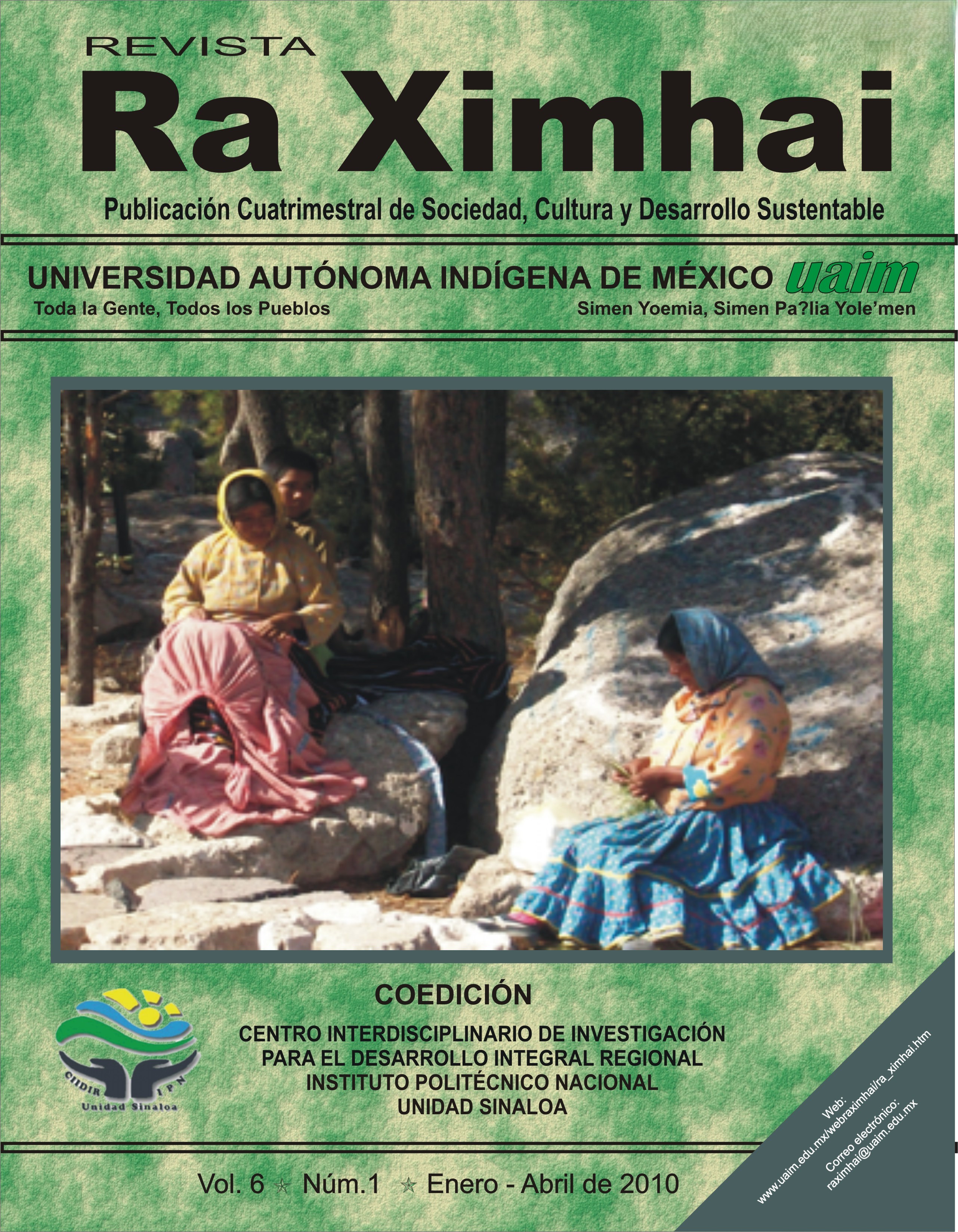Environmental effects produced by shrimp farming in northern Sinaloa, Mexico
DOI:
https://doi.org/10.35197/rx.06.01.2010.02.hgKeywords:
shrimp farms, environmental impact, sustainability indexAbstract
Shrimp farming in Mexico has experienced rapid growth over the past 20 years. In the state of Sinaloa, average production was 16,000 tons between 1998 and 2002. This development has generated adverse effects on the natural environment, such as the reduction of natural areas due to the construction of ponds, as well as salinization of farm soils and considerable contributions of organic matter to the coastal marine environment. However, there have also been benefits to the regional economy of the state. In Sinaloa, shrimp farming is growing, a situation that can generate negative environmental effects, which are indicated here.
Downloads
References
Aiken, D. 1990. Shrimp Farming in Ecuador.
World Aquaculture. 21(4):27-30.
Bailey, C. 1988. The Social Consequences of Tropical Shrimp Mariculture Development. Ocean and Shoreline Management. 11:31-44.
Chamberlain, G. W. and J. S.Hopkins. 1994. Reducing Water Use and Feed Cost in Intensive Ponds. 25(3):29-32.
Dewalt, B R., P. Vergne and M. Hardin. 1996. Shrimp Aquaculture Developmnt and the Environment: People, Mangrove and Fisheries on the Gulf of Fonseca, Honduras. World Development. 24(7):1193-1208.
Diario Oficial de la Federación. 2000. NORMA Oficial Mexicana NOM-059-ECOL-2001, Protección ambiental-Especies nativas de México de flora y fauna silvestres- Categorías de riesgo y especificaciones para su inclusión, exclusión o cambio-Lista de especies en riesgo.
INEGI, 2000a. Sistema de Cuentas Nacionales de México, Producto Interno Bruto por Entidad Federativa, 1993-1998.
http://www.inegi.gob.mx/entidades/espanol/fs on.html.
INEGI, 2000b. Encuesta Nacional de Empleo Urbano, Instituto Nacional de Estadística, Geografía e Informática.
INEGI, 2000c. Indicadores Socio demográficos de México (1930 – 2000). 340 pp.
INEGI, 2001. XII Censo General de Población y Vivienda, 2000. Tabulados Básicos y por Entidad Federativa. Bases de Datos y Tabulados de la Muestra Censal. México.
González-Ocampo, H., Romero-Schmidt, H., Serrano-Pinto, V., Argüelles, C., Salinas, F., Rodríguez, A., Castellanos, A. and Ortega- Rubio, A. 2004. Environmental impacts of two kind of ponds for shrimp production at Northwest Mexico. Journal of Environmental Biology. 25, 27-38
Jones A. B., M. J. O’Donohue., J. Udy and W. C. Dennison. 2001. Assessing Ecological Impacts of Shrimp and Sewage Effluent: Biological Indicators with Standard Water Quality Analyses. Estuarine. Coastal and Shelf Science. 52:91-109.
Kautsky, N., H. Berg., C. Folke., J. Larson and M. Troell. 1997. Ecological Footprint For Assessment of Resource Use and Development Limitations in Shrimp and Tilapia Aquaculture. Aquaculture Research. 28(10):753-763.
Kautsky, N., P. Rönnback., M. Tedengren and M. Troell. 2000. Ecosystem perspectives on Management of Disease in Shrimp Pond Farming. 191(2000):145-161.
Latt, U. W. 2002. Shrimp Pond Waste Management. Aquaculture Asia. 7(3):11-16.
Lightner, D. V., T. A. Bell., R. M. Redman and L. L. Mohney. 1992. A review of some Major Diseases of Economic Significance in Penaeid Prawns/Shrimps of the Americas and Indopacific. In: I. M. Shariff, R. P. Subasinghe y J. R. Arthur (Comps). Diseases in Asian Aquaculture. Fish Health Section. Asian Fisheries Society. 57-80 pp.
Lebel, L. Nguyen H. T., A. Saengnoree, S., Pasong, U., Butama and L. K. Thoa. 2002. Industrial
Transformation and Shrimp Aquaculture in Thailand and Viethnam: Pathways to Ecological, Social, and Economic Sustainability?. AMBIO. 31(4): 323.
Macintosh, D. J. 1996. Mangroves and Coastal Aquaculture: Doing Something Positive for the Environment. Aquaculture Asia. 2(2): 3-
Páez-Osuna, F. 2001a. Impacto Ambiental y Desarrollo Sustentable de la Camaronícultura. Ciencia. 52(1 y 2):15-24.
Primavera, J. H. 1991. Intensive Prawn Farming in the Philippines: Ecological. Social, and Economic Implications. AMBIO. 20(1):28- 33.
Primavera, J. H. 1993. A Critical Review of Shrimp Pond Cultura in the Phillipines. Reviews in Fisheries Science. 1(2):151-201.
Primavera, J. H. 1996. Socioeconomic Impacts of Shrimp Culture. 28(10):815-827.
Rosenthal, H. 1994. The Trend Toward Intensification has Caused Considerable Socioeconomic Conflict. World Aquaculture. 25(2):5-11.
SAGARPA-CONAPESCA. 2004. Resultados
preliminares de la actividad pesquera en México. Disponible en: http://www.conapesca.sagarpa.gob.mx/work/si tes/cona/dgppe/anuario2003.zip [Enero, 2010].
SAGARPA-CONAPESCA. 2005. Resultados
preliminares de la actividad pesquera en México. Disponible en: http://www.conapesca.sagarpa.gob.mx/work/si tes/cona/dgppe/anuarios/Anuario_2004.zip [Enero, 2010].
SAGARPA-CONAPESCA. 2006. Resultados
preliminares de la actividad pesquera en México. Disponible en: http://www.conapesca.sagarpa.gob.mx/work/si tes/cona/dgppe/anuarios/Anuario_2005.zip [Enero, 2010].
SAGARPA-CONAPESCA. 2009. Resultados
preliminares de la actividad pesquera en México. Disponible en: http://www.conapesca.sagarpa.gob.mx/work/si tes/cona/dgppe/anuarios/Anuario2008.zip [Enero, 2010].
Sebastiani M., S. E. González., M. M. Castillo., P. Alvizu., M. A. Olivieria., J. Pérez., M. Rada y
M. C. Yáber. 1994. Large-Scale Shriimp Farming in Coastal Wetlands of Venezuela, South America: Causes and Consequences of Land-Use Conflicts. 18(5):647-661.
Stewart, J. E. 1997. Environmental Impacts of Aquaculture. World Aquaculture. 47-52 pp.
Subasinghe R. and U. Barg. 1998. Challenges to Health Management in Asian Aquaculture. Asian Fisheries Science. 11(1998):177-193.
Tacon, A. G. J., M. J. Phillips and U. C. Barg. 1995. Aquaculture feeds and the Environment: The Asian Experience. Wat. Sci. Tech. 31(10):41-59.
Trott, L. A. y D. M. Alongi. 2000. The impact of Shrimp Pond Effluent on Water Quality and Phytoplankton Biomass in a Tropical Mangrove Estuary. Marine Pollution Bulletin. 40(11):947-951.
Wang, J. K. 1990. Managing Shrimp Pond Water to Reduce Discharge Problems. Aquacultural Engineering. 9:61-73 pp.
Downloads
Published
How to Cite
Issue
Section
License
Copyright (c) 2010 Héctor Abelardo González Ocampo

This work is licensed under a Creative Commons Attribution-NonCommercial 4.0 International License.
Usted es libre de:
- Compartir — copiar y redistribuir el material en cualquier medio o formato
- Adaptar — remezclar, transformar y construir a partir del material
- La licenciante no puede revocar estas libertades en tanto usted siga los términos de la licencia
Bajo los siguientes términos:
- Atribución — Usted debe dar crédito de manera adecuada , brindar un enlace a la licencia, e indicar si se han realizado cambios . Puede hacerlo en cualquier forma razonable, pero no de forma tal que sugiera que usted o su uso tienen el apoyo de la licenciante.
- NoComercial — Usted no puede hacer uso del material con propósitos comerciales .
- No hay restricciones adicionales — No puede aplicar términos legales ni medidas tecnológicas que restrinjan legalmente a otras a hacer cualquier uso permitido por la licencia.








